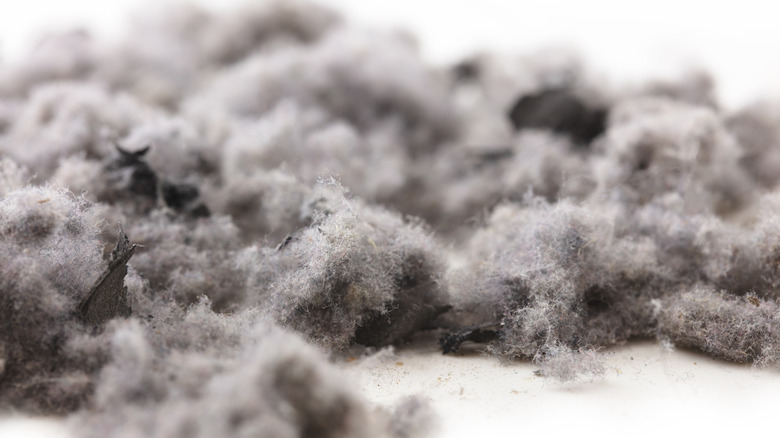The Gross Truth About What Dust Is Really Made Of
Unless you're an allergy sufferer or a neat freak, you may not notice how much dust is in your home on a daily basis. But it's a lot.
The average home accumulates about 40 pounds of dust yearly, per "Today," and it loves to collect in pillows, mattresses, children's toys, and air vents. And it's not just our homes that are dusty — our planet is, too. Recent research discovered that the Earth's atmosphere is much dustier than was previously believed, containing "17 million metric tons of coarse dust — the equivalent of 17 million elephants, or the mass of every person in America, put together," per the National Science Foundation.
By now, you're probably wondering what exactly dust is, where it comes from, and why it matters in our day-to-day lives. Here, we take a deep dive into the gross truth of everyday household dust and what it's really made of.
Dust is a mixture of many different substances
First, the dust in your home, which is a combination of various substances, comes from two sources: indoors or outdoors, per NPR.
The people and animals living in or spending time in your home are responsible for bringing outdoor stuff inside, including tracking in soil particles on our shoes and allowing in air-born particles when we open the door. Outdoor sources contribute two-thirds to the total mixture that is dust.
But things inside your home are responsible as well, such as fibers from furniture, carpeting, clothing, or bedding. Living organisms contribute, too, as dust contains skin flakes and hair from humans and pets as well as dander from pets. This internal element contributes one-third to the total dust load of your home.
What's more, dust also contains dust mites, bits of dead bugs, bacteria, pollen, and microscopic specks of plastic, according to Chemical & Engineering News.
So, if you haven't dusted your house in a while, now might be an ideal time, don't you think?

